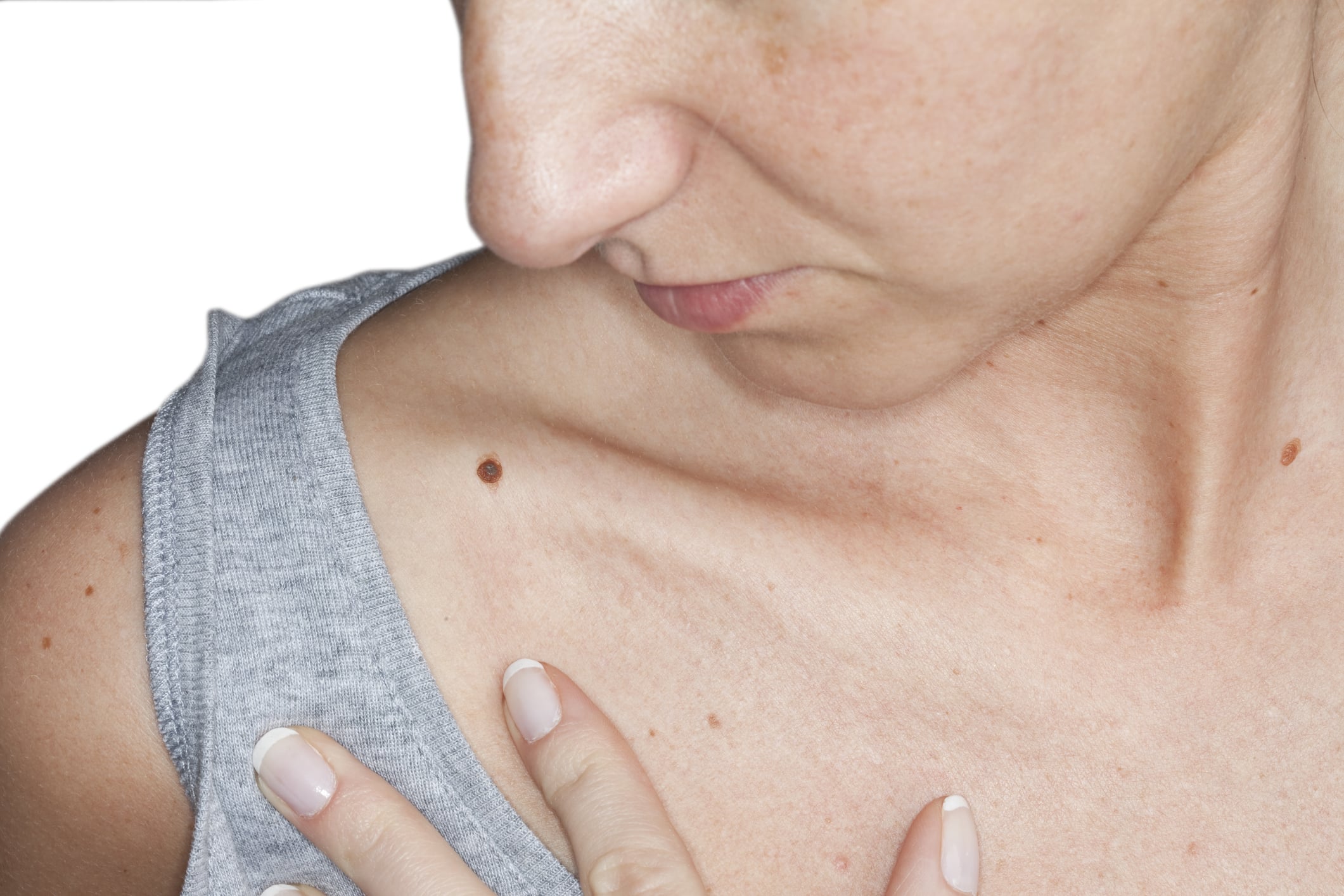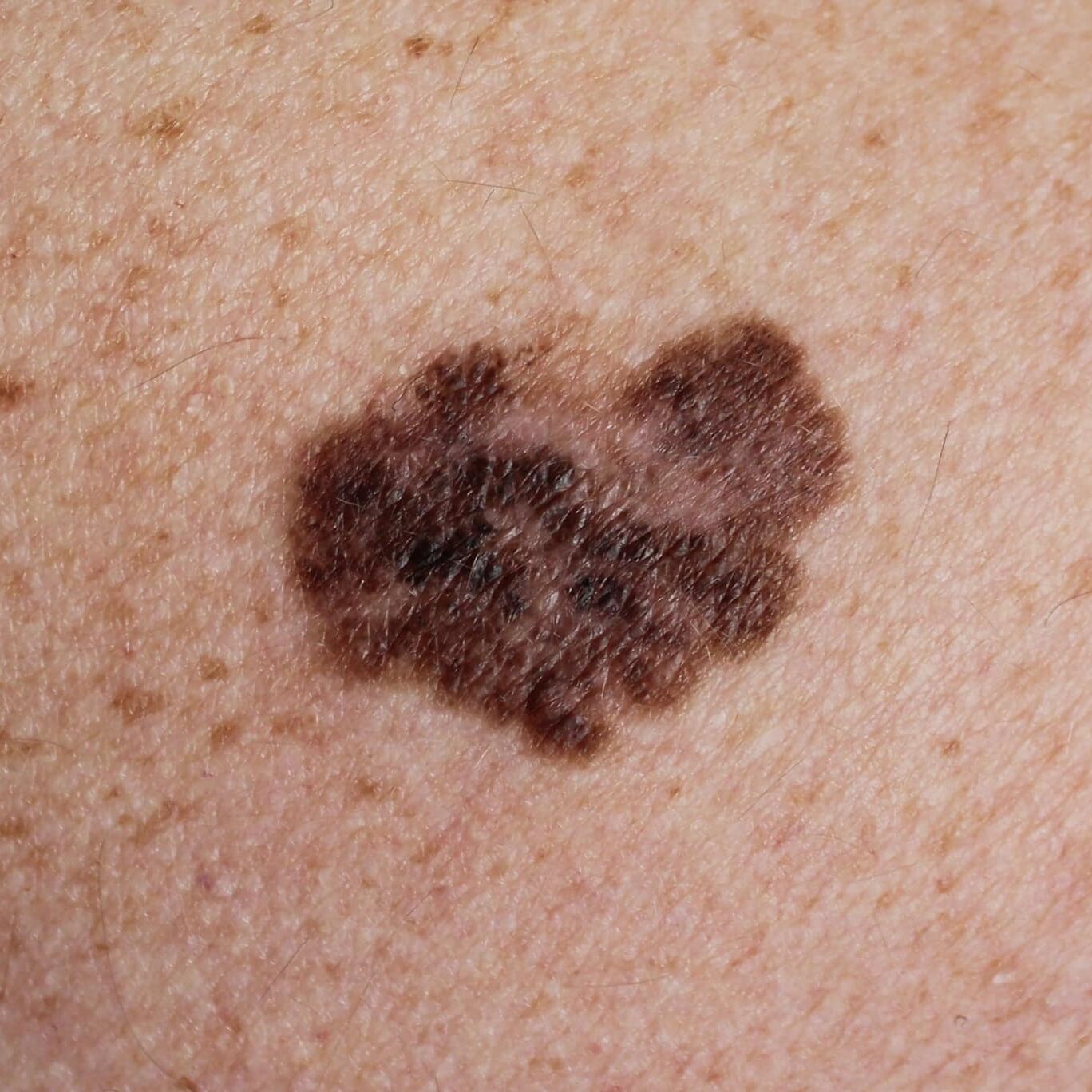Melanoma is a serious type of skin cancer, in which there is an uncontrolled growth of cancerous melanocytes (pigmented cells).

Skin cancer is the most common cancer in the United States, and it is largely preventable. One out of five people in America will get skin cancer in a course of a lifetime, and one person dies from melanoma every hour. Melanoma is a serious type of skin cancer, in which there is an uncontrolled growth of melanocytes (pigmented cells). Noncancerous growth of melanocytes results in moles (benign), while cancerous growth of melanocytes results in melanoma.
By wearing daily sunscreen with reapplication, you can cut your melanoma risk in half. Nearly 90% of non-melanoma skin cancers and 65% of melanoma skin cancers are attributed to sunlight exposure. However, skin cancer can present in non-sun exposed areas. UV radiation from the sun damages our skin and increases our risk of skin cancer.

Melanoma appears as a new or changing mole. It is most frequently on the back of men, or legs of women. It can appear anywhere on the body, and it is associated with ultraviolet (UV) light exposure. The most dangerous risks for melanoma include sunburns during childhood, fair skin/blue eyes, and a personal or family history of melanoma.
Some important ways to stay protected involve preventative practices and screenings. The most important protection is staying out of tanning beds, and avoiding the peak hours of sun exposure (usually between 10 am and 2 pm). As many people are active and enjoy outdoor activities, using sunscreen is important when you are outside. Some key pointers to stay protected include using a minimum SPF of 30 (which measures UVB protection), using a sunscreen that is “broad spectrum” (which involves UVA protection), wearing hats and protective clothing, as well as reapplying sunblock every two hours.
People that are high risk, or have concerning lesions, should be routinely checked by their dermatologist. We instruct patients to watch out for the “ABCs” of melanoma: ASYMMETRY, BORDER, COLOR, DIAMETER and EVOLUTION. We are looking for moles that have one half not matching the other, irregular borders, different colors in one mole, diameters larger than a pencil eraser and any other changes. If you have noticed any change, it should prompt an evaluation and possibly a biopsy/removal of the mole.
To take advantage of preventative measures, we recommend an annual body screening, and have your healthcare provider take an in-depth look and track any changes of your moles.

Surgical excision is the most common form of treatment. Unfortunately, more aggressive lesions may require other additional measures, such as chemotherapy.